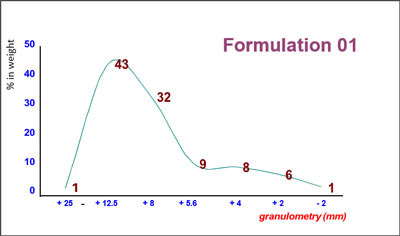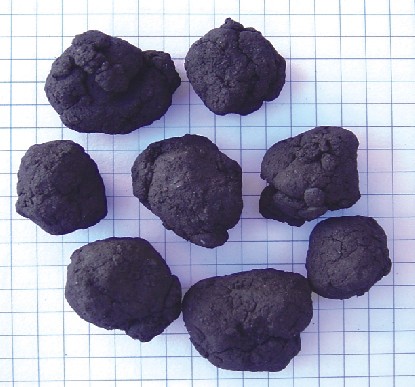No data found
Granulation in Ferrous Metallurgy - Blast Furnace Residues
7/12/2020
|
Press
Background
Taking Brazil as an example, a ferrous metallurgy company produces around 7,880 tons of smelting per month in its blast furnace.
Residues generated from this process that are not reutilized within the process itself are shown in the table below.
Table 01. Residue production (tons)
| residue |
tons/month |
| mineral powders |
1,077 |
| filter 01 powders |
92 |
| filter 02 powders |
68 |
| filter 03 powders |
93 |
| filter 04 powders |
36 |
The sum of all residues shown in Table 01 is 1,366 tons. The table below indicates the monthly % of each residue in relation to the total generated.
Table 02. Residue production (%)
| residue |
% |
| mineral powders |
78.8 |
| filter 01 powders |
6.7 |
| filter 02 powders |
5.0 |
| filter 03 powders |
6.8 |
| filter 04 powders |
2.6 |
Objective
To be able to recover all the residue generated, as per Table 01, in the steel-production process, a "granule/pellet" would have to be formed using the formula in Table 02.
The granule must have sufficient mechanical resistance to friction, abrasion and compression so that it may be transferred to the blast furnace without forming further dust. To obtain such a result, the addition of solid or liquid binders are necessary.
Physical Characteristics
The apparent specific weight (t/m³) of the blast furnace residues is listed in Table 03:
Table 03. Apparent specific weights from the residues
| residue |
PS ( t/m3 ) |
| mineral dusts |
1.70 |
| Filter 01 dust |
0.36 |
| Filter 02 dust |
0.40 |
| Filter 03 dust |
0.38 |
| Filter 04 dust |
1.27 |
Technical Verification
Through the utilization of the WAM laboratory mixer (mixer/granulator) with a 6-liter capacity, the following test procedure was implemented:
- Formula component weighing
- Addition of the organic binder
- Loading the mixer
- Homogenization for 2 minutes
- Addition of water
- Granulation for 3 minutes
- Granule finishing for 2 minutes
Once granulation is complete, the material was subjected to drying at 120° C.
The subsequent step was granulometric classification through the use of sieves of 25, 12.5, 8, 5.6, 4 and 2 mm. Graph 01 shows the results obtained.
Graph 01: Granulometric Distribution (mm)

Conclusion
The granulated product has good mechanical resistance, sufficient for handling, with 93% of the granules being greater than 4 mm.
In this way, all residues generated in the manufacture of steel (blast furnace) and transformed into granules can be reused in the industrial process.
Granulation formulation 01: 4 mm

